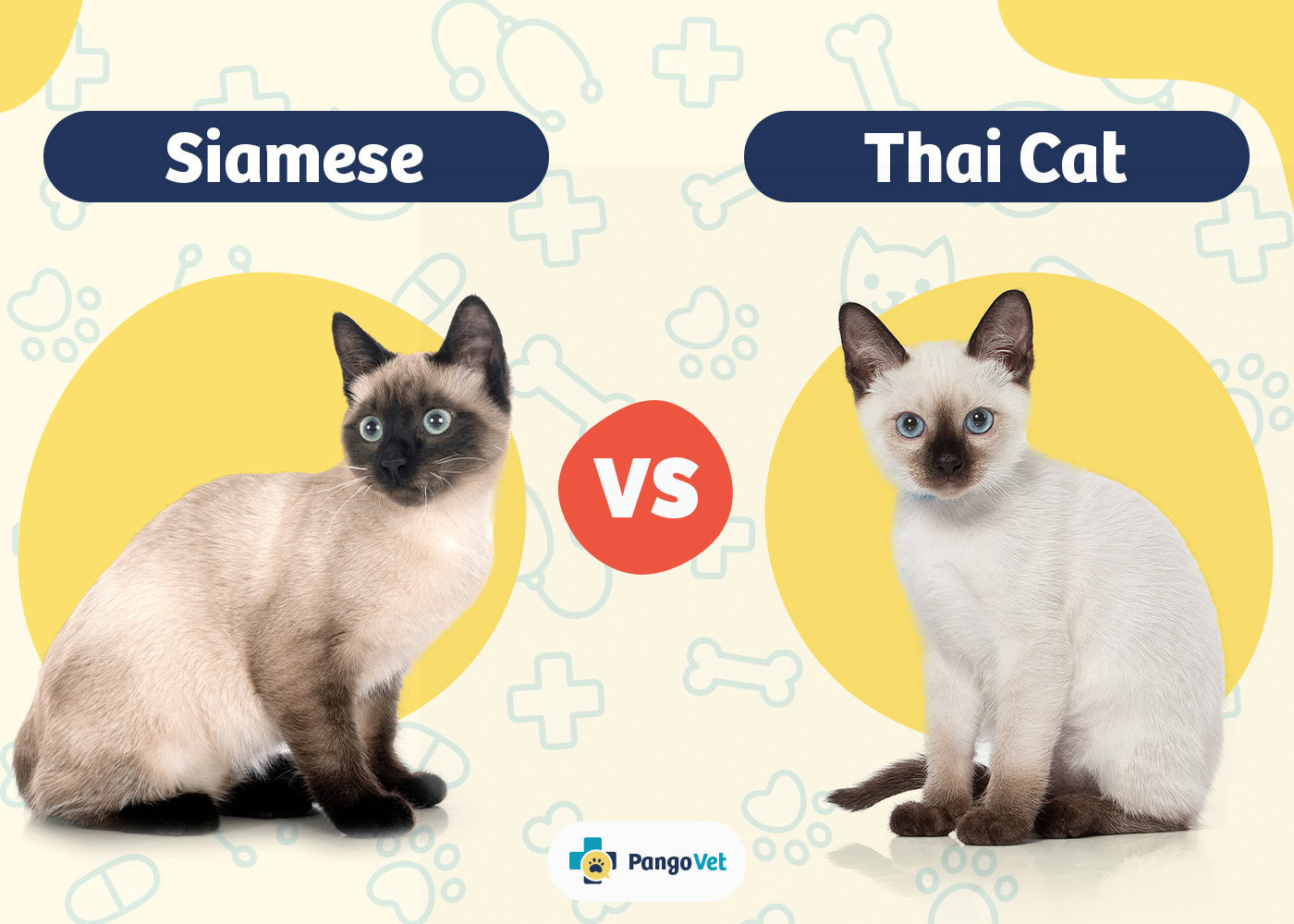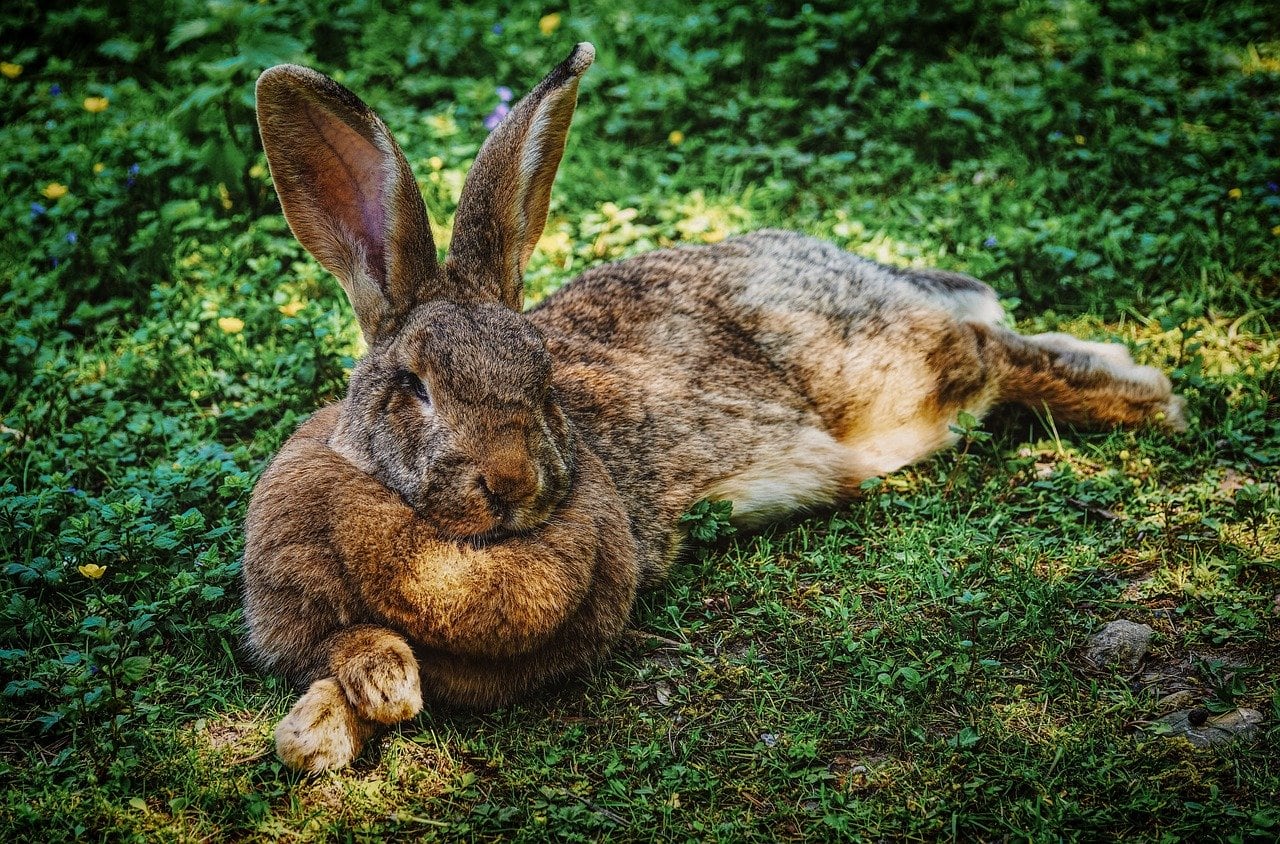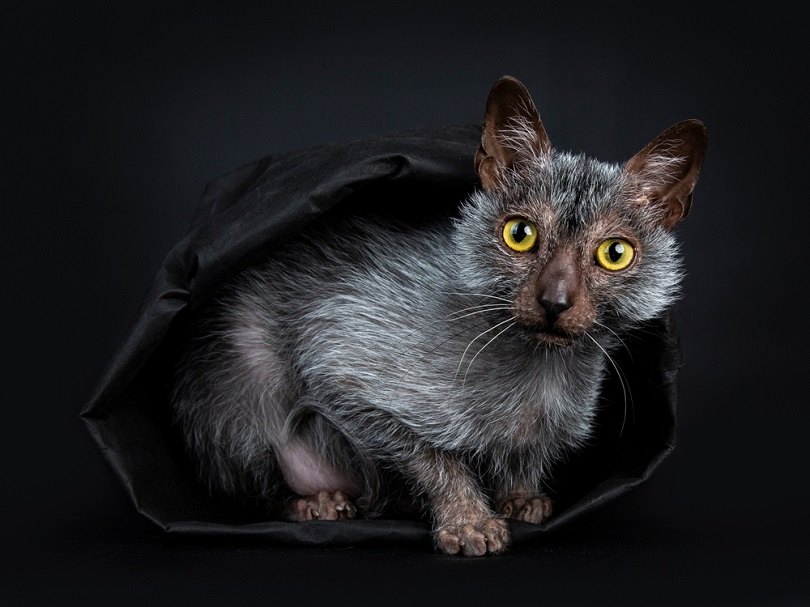Click to Skip Ahead
At first glance, the Siamese and Thai Cat look alike. Both originated in Thailand, hence, the respective names. However, the two are paradoxically close and not close breeds. Enthusiasts are pretty adamant about this point. The simple explanation is that the Siamese as we know it today is a modified, selectively bred cat.
On the other hand, the Thai Cat remains the traditional expression of the Siamese breed. That explains some of the synonyms for it, such as Traditional Siamese and Old-Style Siamese. If you look at the two cats side by side, the variations are apparent. It also provides the fodder for why they are different breeds.
The International Cat Association (TICA) recognizes both the Siamese and Thai Cat. The American Cat Fanciers Association (ACFA) only gives the former official status. This background makes it easy to understand the confusion. In any case, it’s an excellent case study of selective breeding and how its changes can stir emotions.

Visual Differences
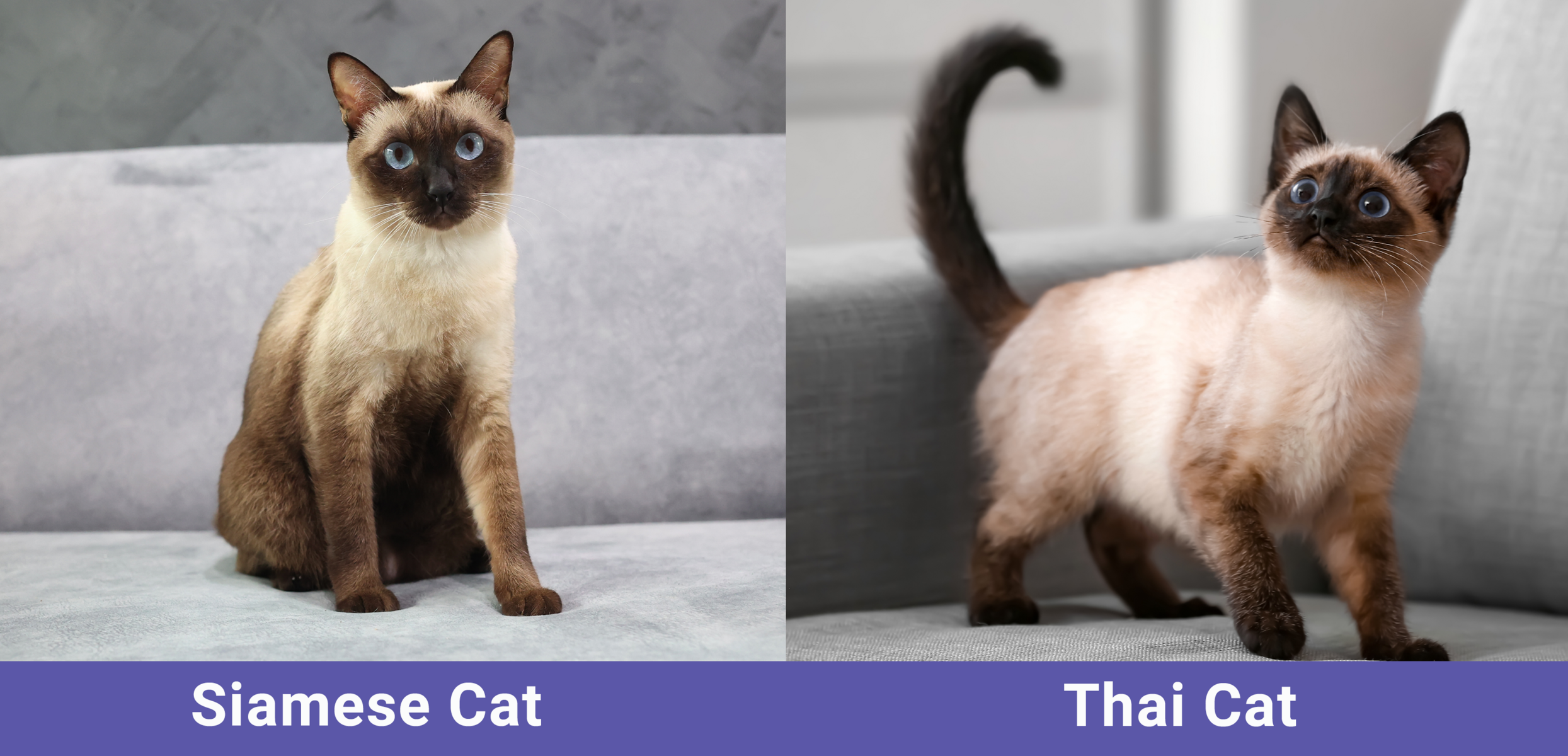
At a Glance
- Average size (adult): Medium
- Average weight (adult): 5–12 pounds
- Lifespan: 12–15 years
- Energy level: Very active
- Grooming needs: Low
- Family-friendly: Yes
- Other pet-friendly: Often
- Intelligence: Very high
- Average size (adult): Medium to medium-large
- Average weight (adult): 7–12 pounds
- Lifespan: 12–15 years
- Energy level: Very active
- Grooming needs: Low
- Family-friendly: Yes
- Other pet-friendly: Often
- Intelligence: Very high

Siamese Overview
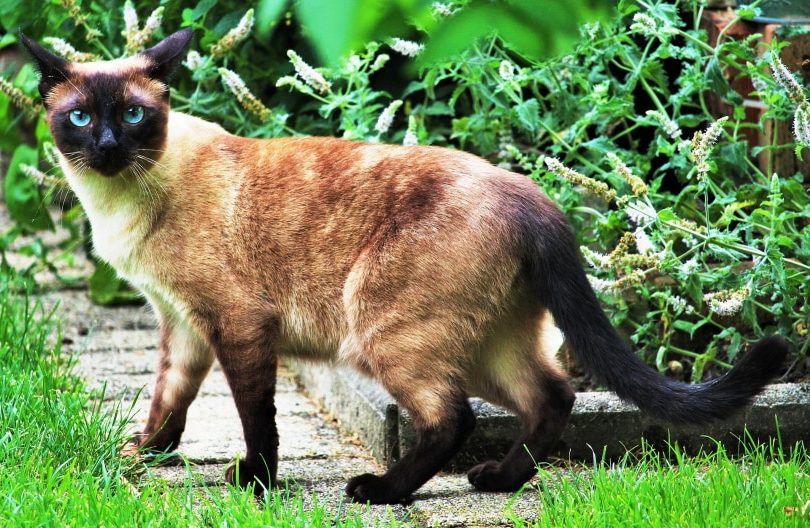
Many personality traits of cats have a genetic basis. Since the Siamese and Thai Cat have a common origin, we’d expect to see a lot of overlap. A look at the typical behavior of this breed builds a strong case for its popularity. It is social with both people and other cats. It is least likely to express aggression toward humans while holding fast to its wild side.
Temperament
You can’t ask for a better pet than a Siamese. This short-haired cat has a big personality. If you don’t notice this feline, they’ll make sure to correct your misstep. It is one of the more vocal breeds. This one always seems like they have something to say. This cat is just as content snuggling on your lap as they are racing around the house, chasing invisible pets.
The Siamese is affectionate with family members, strangers, and other pets, especially if you socialize your cat early in life. This kitty will also tolerate handling. Again, the timing makes all the difference. The Siamese craves attention and is most comfortable on center stage. This breed is also quite adaptable and rolls with the punches.
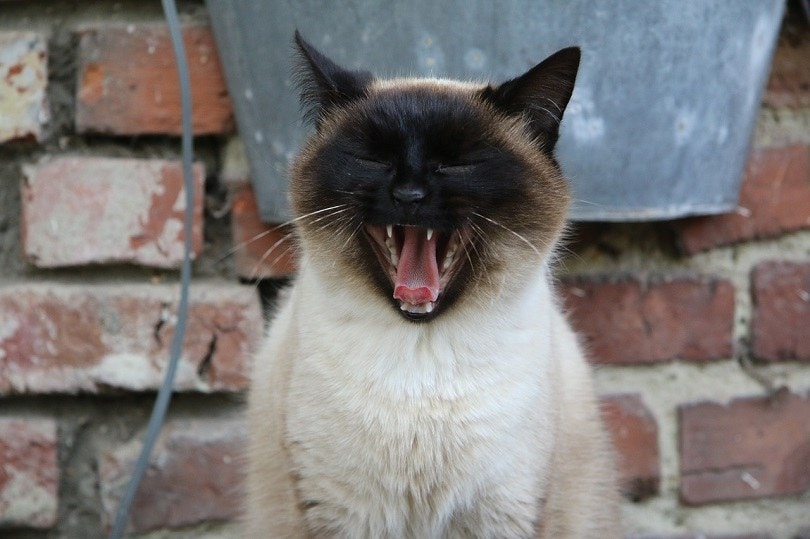
Intelligence
The Siamese is well-known for its intelligence. However, that’s the proverbial double-edged sword. Your pet will learn to pick up the household routines quickly. Whoever coupled the phrase “curiosity and cat” probably had the Siamese in mind. This cat is the definition of the word. It’s the pet that will figure out how to open drawers and cupboards. Anything new will catch their eye, whether you want it or not.
That also means you’ll need to provide plenty of toys to keep your pet occupied. This cat will enjoy interactive ones, too, since they’ll positively trigger their curiosity.
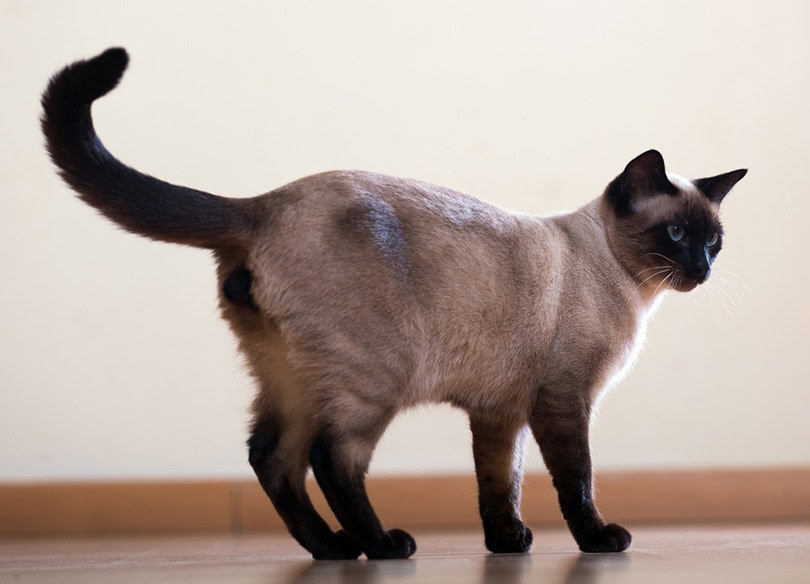
Health and Care
The Siamese is a relatively healthy breed, despite its popularity. The selective breeding that gives this cat its larger head also increases the risks of dental and respiratory issues. Cosmetic flaws, such as a kinked tail, occasionally appear. We strongly urge you to buy only from breeders and sellers who provide a written health guarantee.
Pet ownership is a responsibility. Regular vet care is imperative, especially in light of the possible genetic issues with this breed. After all, catching a problem earlier is always the best way to manage it before it impacts your cat’s quality of life. Brushing your Siamese’s teeth daily will help prevent dental disease.
Patterns and Colors
The AFCA recognizes four patterns in the breed standard:
- Tortie Point
- Solid Point
- Lynx Point
- Tortie Lynx Point
The AFCA also allows several colors, including cream, red, seal, chocolate, lilac, and blue. The TICA standard has the same criteria. Both organizations recognize the darkening color of senior pets. The desirability and rarity of the color pattern will determine the cost.
Suitable for:
The Siamese is best suited for individuals and families that can give this needy feline the attention it wants. It’s not a pet that will be content with being left alone for long stretches. It’s not a stretch to call this feline a people cat. They will form strong bonds with their owners.

Thai Cat Overview
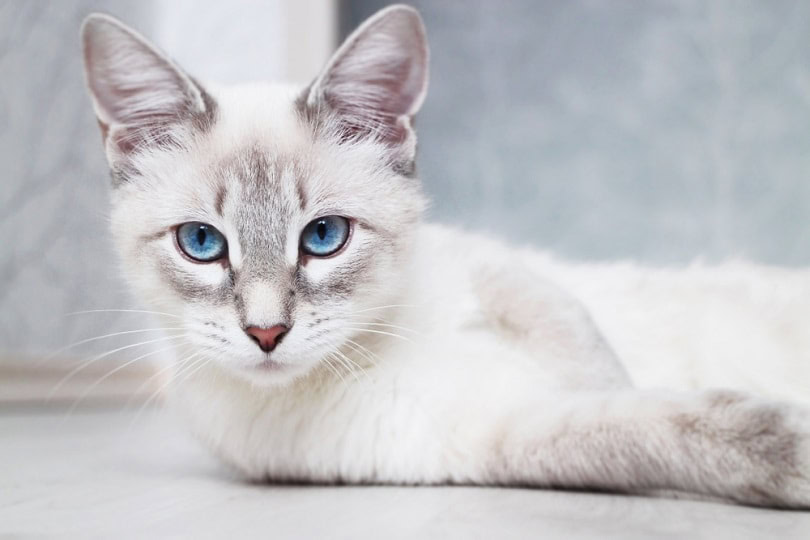
The Thai people call this breed wichienmaat, which means diamond gold. The color of the feline’s coat, a warm beige, is evident. It is the real deal that holds to the standards of what later became the Siamese to the rest of the world. You can see the differences in its head shape and eye color.
Temperament
The Thai Cat has many of the lovable qualities that have endeared the Siamese to so many pet owners. It appears that selective breeding focused more on conformation changes and new standardized colors and patterns. This one is just as vocal and energetic as the Siamese. They’re also every bit as intelligent and curious. Therefore, the same heads-up about keeping your pet entertained applies here, too.
Intelligence
The Thai Cat is well in touch with its wild side. They love to explore their world, up and down its length and breadth. These pets are capable jumpers and will find the tops of bookcases or armoires as new places to investigate or claim as theirs. Interactive toys are a must-have with this feline to keep them entertained.
Like the Siamese, this kitty will get along with all the people and animals in your household. Visitors are only strangers once for the Thai Cat. While they’re vocal, they’re not overly loud. The Thai Cat just has a lot to say that it wants to make sure you know. This communication is a hallmark of the breed’s intelligence.
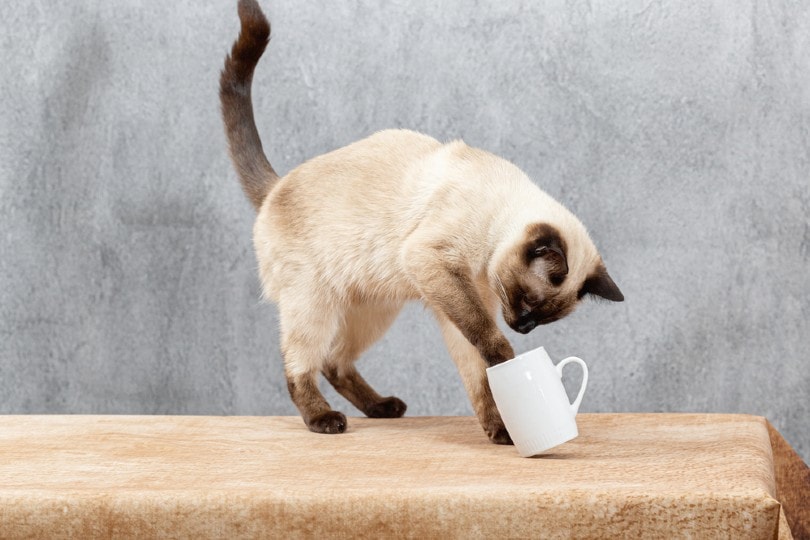
Health and Care
Overbreeding or inbreeding is a problem in many popular breeds. Either one weakens the gene pool and increases the incidence of congenital disorders. Fortunately, enthusiasts recognized these risks early on and took the necessary measures to keep the Thai Cat relatively healthy. That’s evident with the differences in the risks of respiratory issues with Siamese.
The best way to take care of your pet—no matter what species or breed—is through regular veterinary visits. The diligence of the enthusiasts and the genetic soundness of the breed doesn’t mean bad things can’t happen. That’s why those routine annual exams are so essential.
Patterns and Colors
The TICA’s breed standard specifies the pale, off-white color of the Thai Cat’s coat. All colors for the points are allowed as appropriate for each one’s class. They should also all be the same color. That gives you a lot of wiggle room for finding the pet that you want. The association’s list of faults includes obvious congenital issues, such as crossed eyes.
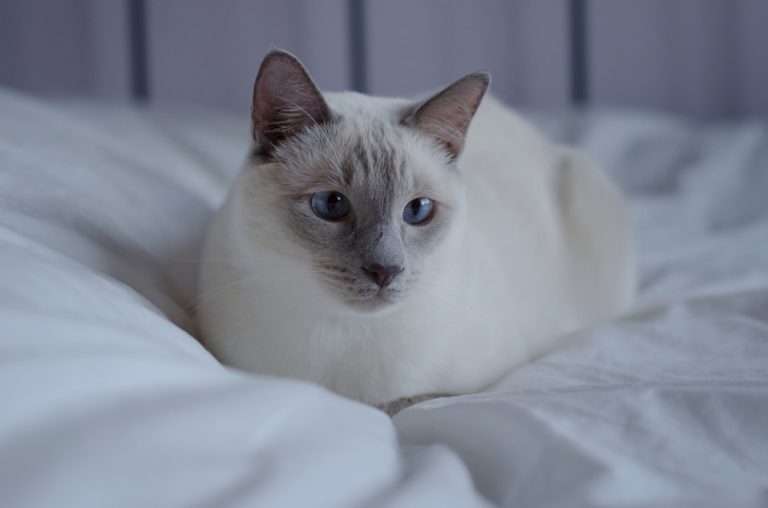
Suitable for:
The Thai Cat has a more robust body than the Siamese. That explains its slightly larger size. This breed has an elegance all its own. Anyone looking for a Siamese would find this one an excellent choice as well. The other driving factors are availability and cost. The Thai Cat is relatively new in the United States compared to the Siamese.
That means you may find it challenging to locate one. It might also translate into a higher price tag. However, keep the differences in the animal’s health risks in mind. The uniqueness of the Thai Cat is worth the search for individuals who want a more genuine expression of this feline.

Which Breed Is Right for You?
A comparison of the Siamese and Thai Cat is an interesting lesson on the consequences of selective breeding. Purists may naturally gravitate toward the latter because of its long history in Thailand. Both breeds will make excellent pets for individuals who can give this needy feline the attention that they want. They’re also ideal for families with children or other pets.
While both breeds are relatively healthy, the Thai Cat has the edge. It’s one case where a pet’s obscurity and scarcity help to protect the genetic line. The Siamese is the winner when it comes to availability and cost. However, the latter is also dependent on the lineage. Show-quality animals will command a higher price. For some, these things may put either one in the deal-breaker or dealmaker category.
See Also:
- Bengal vs. Egyptian Mau: The Key Differences (With Pictures)
- Bengal vs. Toyger: The Main Differences (With Pictures)
Featured Image Credit: Top – Voraorn Ratanakorn, Shutterstock | Bottom – Bangtalay, Shutterstock
